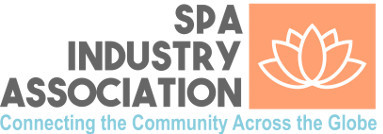
Despite its popularity, massage is not an extremely modern practice. Massage techniques can be traced back as far back as 2700 BC in ancient Chinese and Egyptian cultures. Even Julius Caesar is believed to have loved an occasional massage.
A good massage soothes your body and helps you relax. Their benefits include lowering blood pressure, improving circulation, relieving soreness, and alleviating anxiety. Perhaps many people take advantage of a massage after a long and stressful day at work. Some also avail of it after playing sports or performing physical training, but have you ever wondered if it’s also suitable the other way around? Can one have a massage pre-workout?
Let’s take a closer look and answer the question: Is it safe to exercise after a massage?
Performance Decline Post-Massage
The Journal of Sports Science & Medicine published a widely-cited study in December 2008 that found pre-workout massage resulted in a reduction in vertical jump and sprint performance measured in healthy males and the effects on both speed and reaction time. Due to this data, information circulated regarding a workout after a massage is ineffective.
A decade later, a study published in the International Journal of Sports Physical Therapy in August 2018 confirmed this notion, revealing that participants with a more extended pre-exercise massage are at risk of being less effective. In other words, many people recommend giving massages 24 hours before exercising or, better yet, following a workout instead.
A Preferable Sequence
So what about after you’ve worked out? In a February 2014 study published in the International Journal of Sports Physical Therapy, the male participants experienced more minor soreness than peers who did not receive massage therapy. Researchers recommend this treatment to help improve recovery. One thing to note is it’s essential to understand the interval between your massage and workout.
Is It Safe To Exercise After A Massage?

The trainers at Drive Train Hustle recommend, “you should have a workout after your exercise, instead of before it.” Before doing any strenuous exercise, it’s best to wait at least 24 hours after a massage. Activities with high intensity include weightlifting, running, yoga, and strenuous ones such as high-intensity aerobics. On the flip side, doing light exercise is safe for most healthy individuals after a massage, such as moderate walking or swimming.
This recovery period is promoted because sustained pressure on connective tissue, such as during a massage, will make it softer. During these times, the tissues soften, so exercise can cause more pain or discomfort by pulling or moving them.
For people who exercise regularly, some find it difficult to hold off on exercise. It is recommended that you exercise before taking a massage and then enjoy a good massage afterwards. It is good to let a bodywork massage work its magic without overstressing it with strenuous activity. Relaxation and rejuvenation can be beneficial to you and your body, as it creates a nice counterbalance to the exertion and challenges, they undergo during athletic activities.
A deep tissue massage might be just what you need if you sweat a lot and work out a lot at the gym. There are many reasons to get a relaxing massage. The stretches tend to get rid of the kinks, soften stiff muscles, and extend stretched muscles after a strenuous exercise session. You must take time to let the same muscles recover from the relaxing rubdown.
Here are a few types of massage you may find helpful:
- Deep Tissue Massage
Typically, deep tissue massages target deeper tissues and work on connective tissue. The therapist makes slow and easy strokes designed to relieve muscle tension and pain.
- Hot Stone Massage
A hot stone massage relaxes the muscles by adding warmth to heated stones placed on the back. As the therapist works to release tension throughout your body with the help of the heat, tight muscles are released.
- Swedish Massage
Swedish massages are pretty much a given in most massage parlours. This type of massage emphasizes the superficial layers of the skin, involving long relaxation strokes, kneading, circular movements, and rocking. These calming effects can be achieved by adding light touches to the massage.
- Trigger Point Massage
A trigger point massage can target an area of the body. Muscles, where knots have formed, usually are being squeezed to relieve the spasm. While the patient is being treated, they may be asked to breathe deeply.
Conclusion
Generally speaking, it’s best to have a massage after working out. Massages are like mild workouts where pressure is applied to the muscles. Hence, you will be losing your energy and momentum when you further participate your muscles in strenuous exercises. The best sequence is to do your workout first and then avail of a great massage after that.




